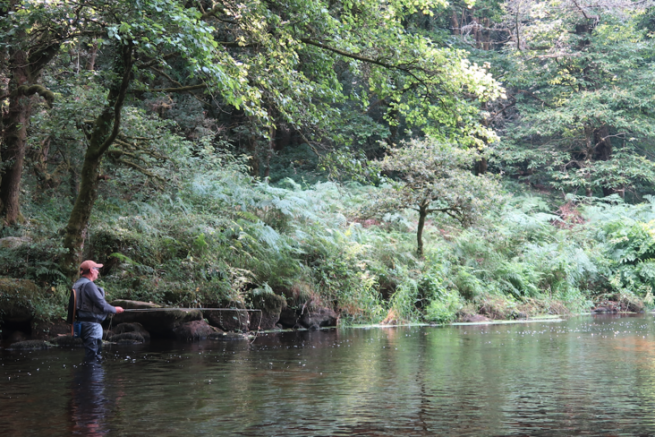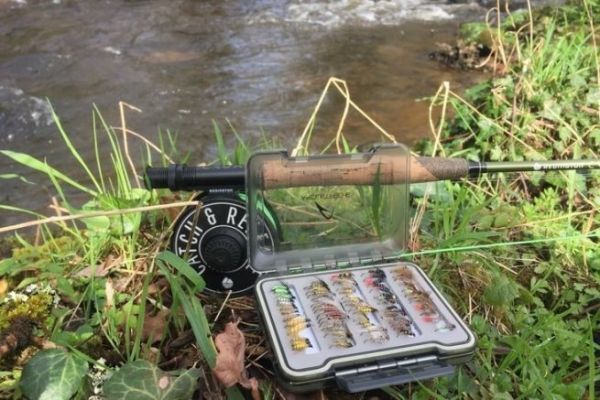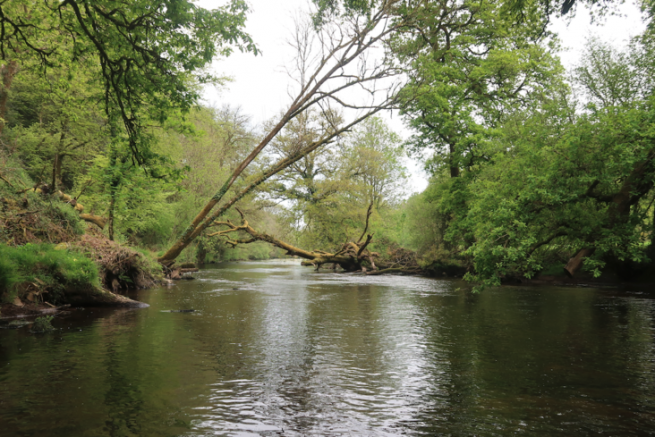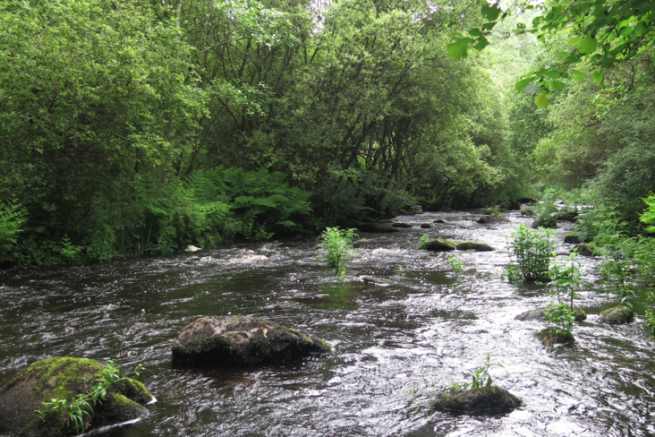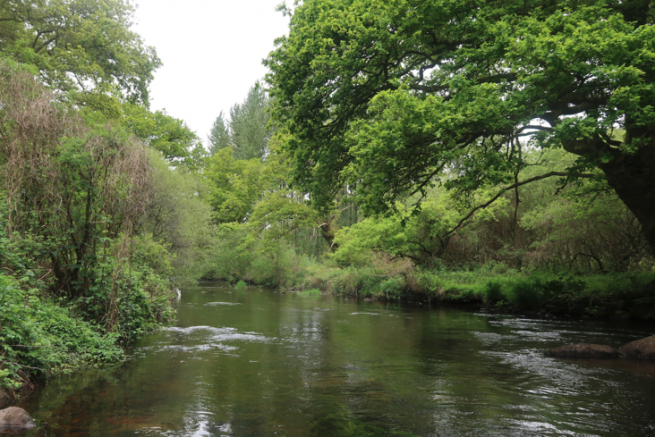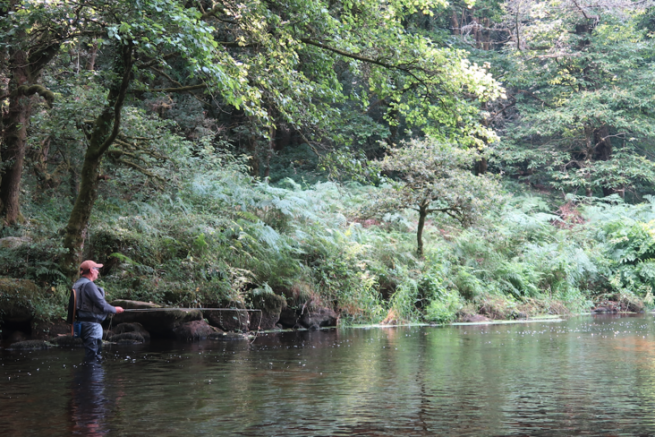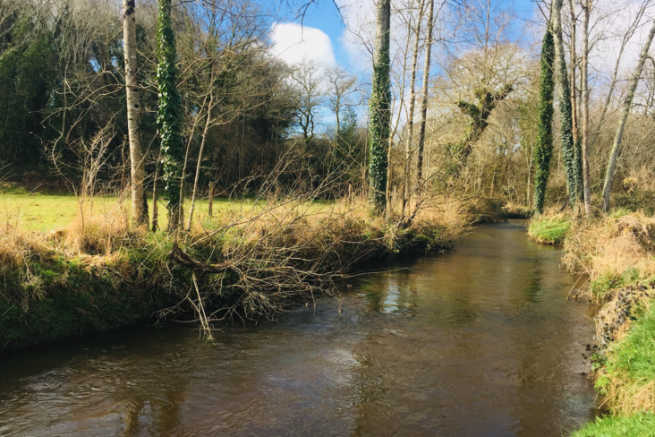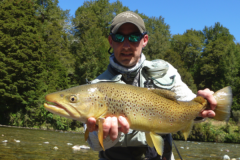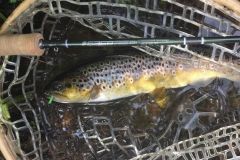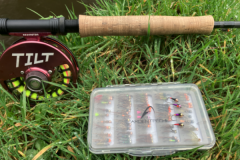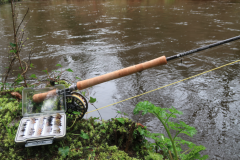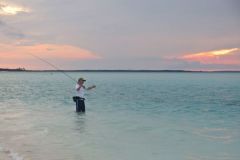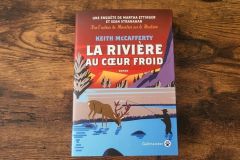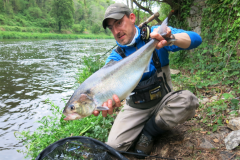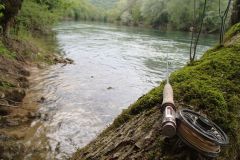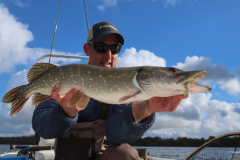Fly fishing is a very particular technique that requires a varied and adapted equipment. The choice of equipment is important to fish correctly in each technique.
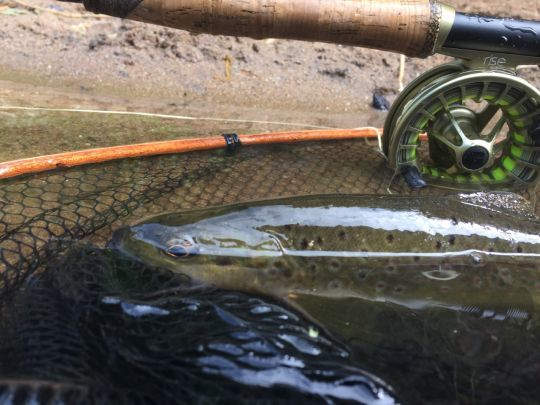
Which rods and reels to use in the river for each technique?
Depending on the size of the river, the chosen sector and the technique used, specific equipment is required.
For dry fishing, a rod of varying lengths is preferred depending on the size of the watercourse. Thus, a short rod of 6 to 8 feet will be well adapted to streams and small rivers. In medium to large rivers, a 9 to 10 foot rod will be the norm.
In nymphing with wire and derived techniques (Czech, Spanish, euronymphing, etc.) a longer rod is often a plus to allow long drifts without dragging and thus to propose its flies naturally to fish. The 9 to 11 feet rods are more and more used by the fishermen specialized in these techniques.
For streamer and drowned fly fishing, we generally use rods with a higher power (line number) to be able to cast with ease a drowned fly train often composed of 2 to 3 flies (sometimes weighted) or streamers of 5 to 10 cm. The rods of 9 to 10 feet for line number 4 to 6 compose the majority of the equipment of the fishermen practicing these techniques.
The reel should be the right size for the rod. Most reels are given for a line number that corresponds to the rod. For example, a SAGE Foundation 9 foot rod with a 4 line could be fitted with a SAGE Spectrum 3/4 reel. Next, it is very important that your rod is well balanced. This facilitates the casting action and provides a comfortable fishing experience. This is very important for nymph fishing with a high rod, so as not to cause additional fatigue.
A progressive and powerful brake will be necessary especially if you attack big fish, but as a general rule the reel is often used to store the line more than to fight the fish.
Choose the profile of your silks according to the technique used
Nowadays, there is a very large number of fly fishing lines from many brands (RIO, Royal Wulff, Scientific Anglers, Orvis, JMC,âeuros¦).
They have specific profiles (spindle) depending on the technique used. They are classified by codes.
- Parallel silk or L silk: less and less used, but used for dry fishing at short distance especially in small rivers. They are nowadays more used for nymph fishing with wire or "euronymphing" in small size 2 and 3.
- DT silk or Double taper : a silk with an identical spindle at the front and at the back which allows to lay delicately. Possibility to turn the line over when the front spindle is damaged. They are used for dry fly and nymph fishing.
- WF or Weight Forward silk: allows to load the rod quickly and also to cast far easily. In larger diameters, they are used to cast fast, far and large flies. This is the most used profile today, whether for dry fishing, nymphing or streamer fishing and especially in the sea and for big fish (bass, bonefish, tarpon, permit, carp, dorado,âeuros¦ ).
The silks are also available in several densities especially for lake, reservoir or sea fishing. They allow you to offer your flies in different layers of water and at different levels.
Floating silk, intermediate (dives 3 to 5 cm/s), diving silk (dives quickly).
The plunging bristles are classified by number according to the density and therefore the speed of descent. S2, S3, S4, S5, S6, S7 or S8. The number indicates a sink rate of 2 to 8 inches (2.5 cm) per second.
Depending on the technique used, it will be good to choose :
1- the power of your line, adapted to your rod
2- its profile according to the technique (L, DT or WF)
3- its density
Floating lines are most often used for dry fishing and nymphing. For drowned fishing, a line with an intermediate tip can be used. When streamer fishing, diving lines are useful to get the fish at the bottom. However, it is possible to use floating lines on which a tip called polyleader is fixed (tip from 1,5 to 4,5 m of different densities). This allows to adapt to the conditions.
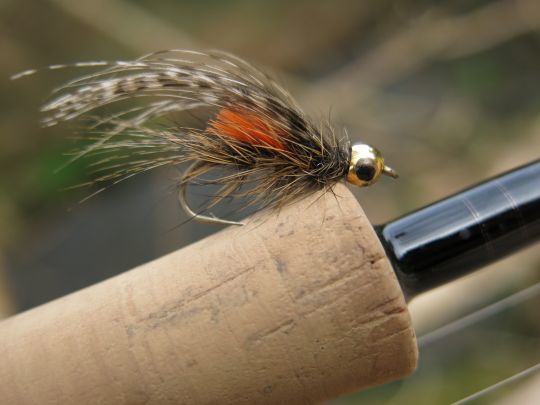
Selection of flies for river fishing
Depending on the season and therefore on the prey present in the rivers, it will be necessary to choose flies adapted to the hatching of aquatic insects, but also terrestrial and other prey (fish, worms, leeches, crustaceans, mollusks, âeuros¦). Knowing the rivers where you practice allows you to know what food is available, especially the type of insects. This science, which is called entomology, makes it possible to identify the hatching of aquatic insects and thus to choose the flies (dry, nymph and drowned) to use. But it is not necessary to know the Latin name and family of each insect. Nevertheless, it is important to know how to observe and use imitations close to what lives in your rivers.
For the beginning of the season, hatchings are rare, but the small red sedges in size 16 and 14, grey plecopters in size 16 and sometimes mayflies (baétis and March Brown in particular) come out at the warmest hours. It is good to know how to recognize them and to propose to the trout a representative imitation.
A train of drowned flies by varying the colors (rather dull at the beginning of the season) of the body and feathers for the ruff (partridge, rooster, woodcock,âeuros¦) allows you to quickly find the ones that interest the trout. Do not hesitate to vary your setups and to change flies. If a hatching occurs, try to put on flies of similar size and color to what is present on the water.
In nymphing, the inevitable pheasant tail and ORL (ear of hare) work all year long. You can use them on straight or jig hooks. Vary the weights and colors of balls (gold, silver, copper, white, chocolate).
The helmeted nymphs and dubbing bodies (olive, brown, beige, black,âeuros¦) rimmed with tinsel (gold, silver, copper) are very interesting too.
More and more fashionable, the perdigones (smooth nymphs) are often interesting to fish hollow, because they go down quickly to the desired depth.
For streamers, minnow and sculpin imitations are most often used. Brown, black and olive streamers are also used.
It is therefore necessary to have a wide selection of flies for each technique to face the different fishing situations encountered, sectors, current speeds and insects present.
